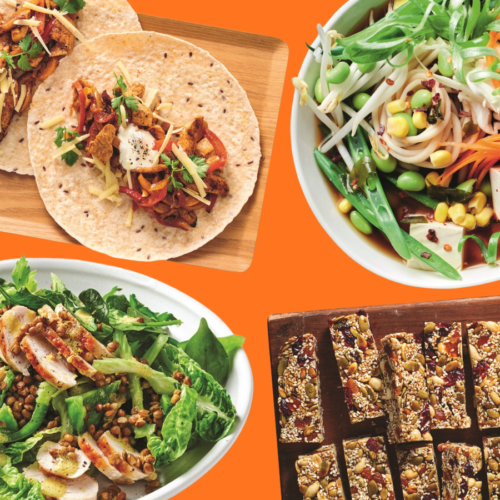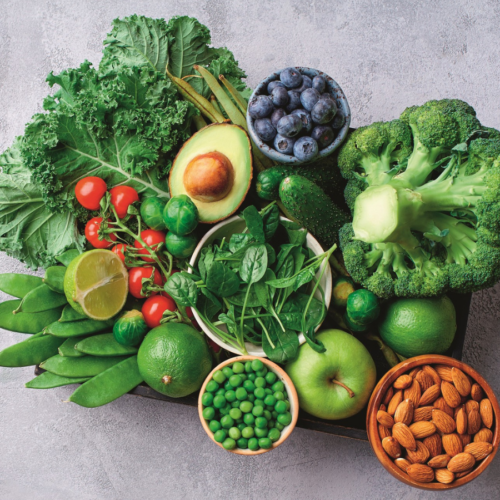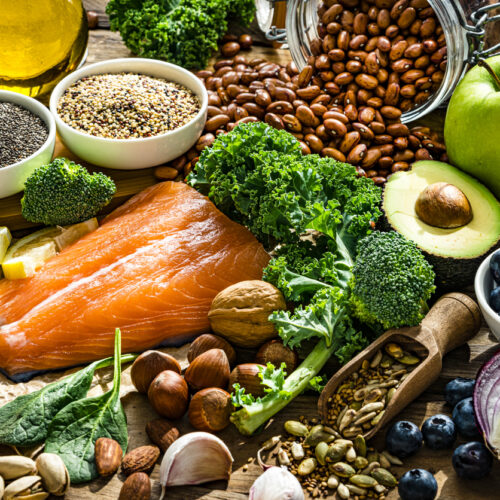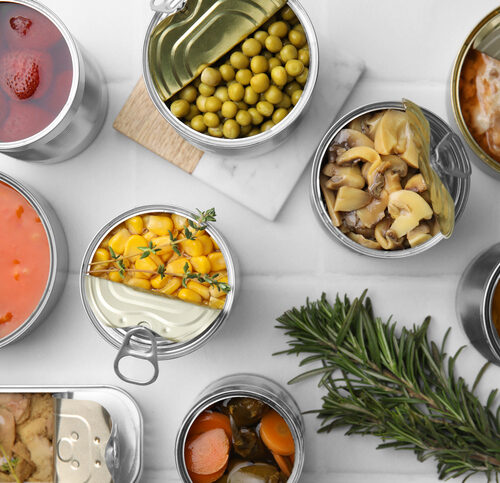
If you start to go crazy after a few days on a diet, you are not alone – deprivation is not good for body or soul and our bodies fight it all the way. This is one of the reasons diets don’t work. The good news is that there is a better way!
A way to keep mentally and physically satisfied while losing weight is to maintain or even increase the volume of the food you eat, while still reducing kilojoules. This all comes down to changing the proportions of the food you eat – less energy-dense foods and more of those that are nutrient-rich and low in kilojoules.
The easiest way to illustrate this is with a meal. The following series of photos shows what I mean.
1.  2.
2.  3.
3. 
Plate 1 = Regular meal
Plate 2 = Reduced portion, half the kiloloules
Plate 3 = Half the kilojoules as plate 1, but satisfying volume!
Plate 1 has a meal with common proportions – 1/3 plate meat, 1/3 plate starchy foods and 1/3 plate vegetables. A standard approach to reducing kilojoules would be to reduce portion size of all three meal components – we see this in plate 2 where the kilojoules of the meal have been reduced by 50 per cent. What you have, however, is a very small meal – one that is going to scream ‘eat more’ afterwards and an approach that will not help you achieve a healthier weight! A better approach is to reduce the meat and starchy food to 1/4 of the plate respectively, then fill the rest of the plate with non-starchy vegetables. The result (plate 3) is a reduced kilojoule meal that has the same or greater volume than the original meal. This will satisfy much more than the meal with reduced portions.
The same with a sandwich.
1.  2.
2. 
Two rounds of salad-packed sandwiches have the same kilojoules as one round with cheese and salami
The cheese and salami sandwich pictured above is high in kilojoules. We could lower kilojoules by reducing the portion size and just having half a round but this would not be satisfying. A better way to lower kilojoules is to replace butter or margarine with a low-fat spread, have cheese OR salami (not both) and volume-up with heaps of salad. The result is a much larger sandwich than our sad original and one which has half the kilojoules and more than twice the staying power.
Bulking up with vegetables is one of the best strategies for diluting kilojoules and increasing satiety or satisfaction. It also increases the nutrient value of your diet considerably.
Another strategy is to incorporate water into the food (this happens anyway when you volume-up with vegetables). Studies have shown that vegetables eaten on their own with a glass of water do not have the same filling power as if the same vegetables and water are incorporated together as a soup. Interesting, but it works!
Barbara Rolls, in her book The Volumetric Diet, explains all of this more fully. She recommends having a low-kilojoule salad or low-kilojoule soup as a starter for a main meal. Her research has shown that this means less kilojoules are eaten for the main course and consumers feel more satisfied.
It’s simple things like this that make the difference between successful weight loss and failure. Try it for yourself and see!
Bronwen
www.healthyfood.com










